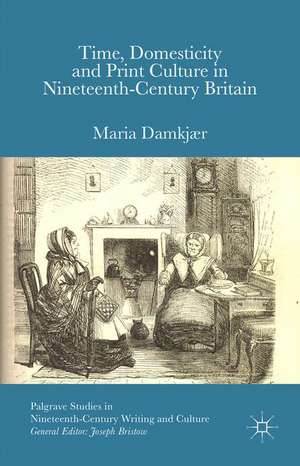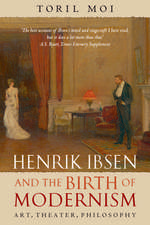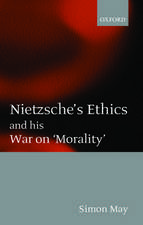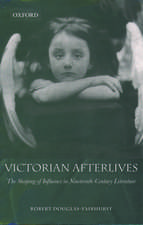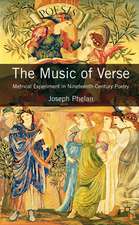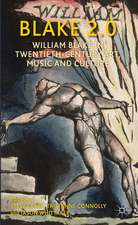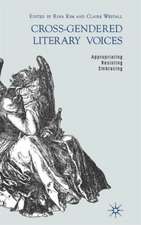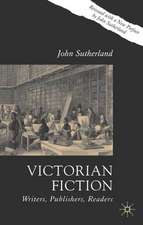Time, Domesticity and Print Culture in Nineteenth-Century Britain: Palgrave Studies in Nineteenth-Century Writing and Culture
Autor M. Damkjæren Limba Engleză Hardback – 29 feb 2016
Din seria Palgrave Studies in Nineteenth-Century Writing and Culture
- 15%
 Preț: 584.43 lei
Preț: 584.43 lei - 20%
 Preț: 691.57 lei
Preț: 691.57 lei - 15%
 Preț: 646.30 lei
Preț: 646.30 lei -
 Preț: 390.63 lei
Preț: 390.63 lei -
 Preț: 390.63 lei
Preț: 390.63 lei -
 Preț: 389.11 lei
Preț: 389.11 lei -
 Preț: 390.63 lei
Preț: 390.63 lei -
 Preț: 384.70 lei
Preț: 384.70 lei -
 Preț: 388.72 lei
Preț: 388.72 lei -
 Preț: 388.72 lei
Preț: 388.72 lei -
 Preț: 388.72 lei
Preț: 388.72 lei -
 Preț: 390.63 lei
Preț: 390.63 lei -
 Preț: 389.31 lei
Preț: 389.31 lei -
 Preț: 388.72 lei
Preț: 388.72 lei - 15%
 Preț: 700.75 lei
Preț: 700.75 lei - 18%
 Preț: 731.10 lei
Preț: 731.10 lei -
 Preț: 387.75 lei
Preț: 387.75 lei - 15%
 Preț: 651.51 lei
Preț: 651.51 lei -
 Preț: 390.63 lei
Preț: 390.63 lei -
 Preț: 390.63 lei
Preț: 390.63 lei -
 Preț: 386.81 lei
Preț: 386.81 lei -
 Preț: 387.75 lei
Preț: 387.75 lei -
 Preț: 392.97 lei
Preț: 392.97 lei -
 Preț: 389.11 lei
Preț: 389.11 lei -
 Preț: 389.88 lei
Preț: 389.88 lei - 15%
 Preț: 641.71 lei
Preț: 641.71 lei -
 Preț: 386.61 lei
Preț: 386.61 lei - 15%
 Preț: 584.43 lei
Preț: 584.43 lei -
 Preț: 392.60 lei
Preț: 392.60 lei -
 Preț: 390.84 lei
Preț: 390.84 lei - 15%
 Preț: 642.36 lei
Preț: 642.36 lei - 15%
 Preț: 582.80 lei
Preț: 582.80 lei - 15%
 Preț: 639.25 lei
Preț: 639.25 lei -
 Preț: 388.72 lei
Preț: 388.72 lei -
 Preț: 387.20 lei
Preț: 387.20 lei - 15%
 Preț: 642.51 lei
Preț: 642.51 lei -
 Preț: 384.31 lei
Preț: 384.31 lei -
 Preț: 387.75 lei
Preț: 387.75 lei -
 Preț: 389.70 lei
Preț: 389.70 lei -
 Preț: 386.81 lei
Preț: 386.81 lei
Preț: 526.18 lei
Preț vechi: 619.03 lei
-15% Nou
Puncte Express: 789
Preț estimativ în valută:
100.69€ • 105.39$ • 83.80£
100.69€ • 105.39$ • 83.80£
Carte tipărită la comandă
Livrare economică 31 martie-14 aprilie
Preluare comenzi: 021 569.72.76
Specificații
ISBN-13: 9781137542878
ISBN-10: 113754287X
Pagini: 192
Ilustrații: VII, 192 p.
Dimensiuni: 140 x 216 x 13 mm
Greutate: 0.38 kg
Ediția:1st ed. 2016
Editura: Palgrave Macmillan UK
Colecția Palgrave Macmillan
Seria Palgrave Studies in Nineteenth-Century Writing and Culture
Locul publicării:London, United Kingdom
ISBN-10: 113754287X
Pagini: 192
Ilustrații: VII, 192 p.
Dimensiuni: 140 x 216 x 13 mm
Greutate: 0.38 kg
Ediția:1st ed. 2016
Editura: Palgrave Macmillan UK
Colecția Palgrave Macmillan
Seria Palgrave Studies in Nineteenth-Century Writing and Culture
Locul publicării:London, United Kingdom
Cuprins
List of illustrations
Acknowledgements
Introduction: Timetabling and its failures
1. Repetition: Making Domestic Time in Bleak House and the 'Bleak House Advertiser'
2. Interruption: The Periodical Press and the Drive for Realism
3. Division into Parts: Elizabeth Gaskell's North and South and the Serial Instalment
4. Decomposition: Mrs Beeton and the Non-Linear Text
Coda: Scrapbooking and the Reconfiguration of Domestic Time
Notes
Bibliography
Index
Acknowledgements
Introduction: Timetabling and its failures
1. Repetition: Making Domestic Time in Bleak House and the 'Bleak House Advertiser'
2. Interruption: The Periodical Press and the Drive for Realism
3. Division into Parts: Elizabeth Gaskell's North and South and the Serial Instalment
4. Decomposition: Mrs Beeton and the Non-Linear Text
Coda: Scrapbooking and the Reconfiguration of Domestic Time
Notes
Bibliography
Index
Notă biografică
Maria Damkjær is a Post-Doctoral Fellow at the Department of English, Germanic and Romance Studies, University of Copenhagen, Denmark. She holds a PhD in English Literature from King's College London, UK.
Textul de pe ultima copertă
Time, Domesticity and Print Culture combines literary criticism with innovative readings of texts' material form. The author argues that the way writing was transmitted – as monthly instalments or periodical articles – contributed to its representative power. The study's focus is domestic time; it shows that writers in the nineteenth century were anxious to describe the middle-class home as a temporal entity and not just a spatial one. In order to describe temporal practices such as repetitive housework, interruption and everyday processes, writers had to negotiate not just narrative, but also the printed page and the serial instalment.
This book traces a spectrum from literary fiction – Bleak House by Dickens and North and South by Gaskell – to less linear forms like periodical writing, Isabella Beeton's cookery book and the private album, in order to argue that print culture was saturated with domestic temporality.
This book traces a spectrum from literary fiction – Bleak House by Dickens and North and South by Gaskell – to less linear forms like periodical writing, Isabella Beeton's cookery book and the private album, in order to argue that print culture was saturated with domestic temporality.
